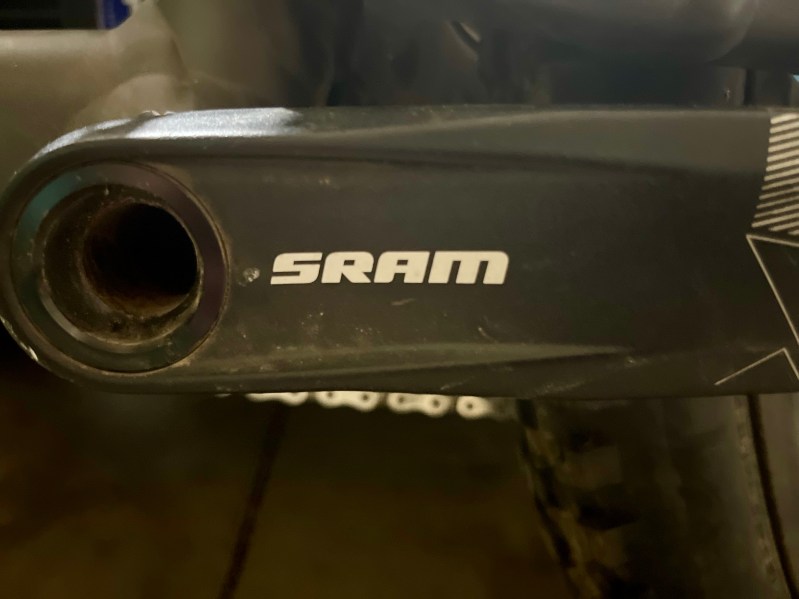
Change and innovation are needed for any industry to grow, and the mountain bike industry has seen a lot of change over the years.
Mountain bike wheel size has steadily grown, starting at 26 inches, then 27.5 inches, and now settling at 29 inches. There has been and continues to be mixing wheel sizes on mountain bikes.
Geometry has significantly changed as bikes have gotten longer, lower, and slacker. Tweaking and perfecting geometry has allowed mountain bikes to find the perfect balance of climbing and descending capabilities.
Just a handful of months ago, another innovation rocked the mountain bike world in the form of a new drivetrain. Perhaps more shocking than this new drivetrain is how the manufacturing company played the long game and tricked us all.

What is a derailleur hanger on a mountain bike?
The derailleur hanger is a small and inexpensive component that sits at the very tail end of your mountain bike. Technically, you could say that a derailleur hanger is part of the drivetrain.
A derailleur hanger has two jobs:
- Attach the derailleur to the mountain bike frame
- Break
That’s right—derailleur hangers are made to be broken. They are intended to take an impact, bend, and snap, so the derailleur itself doesn’t. At roughly $20, replacing a derailleur hanger is much cheaper than a derailleur.
The mountain bike industry’s problem with derailleur hangers was that there were just too many of them. Derailleur hangers aren’t specific to the derailleur but to the mountain bike frame. Each mountain bike company was making derailleur hangers that specifically fit their frames.
The result was hundreds of different derailleur hangers for different mountain bikes. It was chaos. If you snapped your derailleur hanger on a mountain biking trip, it could very well mean the end of your time riding.

SRAM introduces the universal derailleur hanger
For years, mountain bike mechanics had to sift through a giant catalog of derailleur hangers only to tell their customers they didn’t stock the particular one they needed. That was until 2019, when drivetrain and component giant SRAM introduced the universal derailleur hanger (UDH).
SRAM says this about the UDH:
“The UDH is designed to optimize shift performance across all bikes as well as create a sensible solution for replacing damaged hangers. The UDH has been widely adopted throughout the cycling industry with hundreds of models already featuring it.”
Such a simple product could solve one of mountain biking’s largest frustrations. But SRAM had a new task at hand: getting mountain bike manufacturers to tweak their frame design to incorporate the new UDH.
It took a frame cycle or two, but mountain bike companies quickly saw the benefit of going with the UDH. In the years following 2019, it was common to see a newly released mountain bike boasting UDH compatibility.

The UDH was just the beginning
As more and more mountain bike companies jumped on board, changing their frame designs to be UDH compatible, we applauded SRAM for their contribution to mountain biking. Who would have thought such a small thing would make a significant impact?
But if you thought SRAM just rolled out the UDH and said, “You’re welcome very much,” you’d sadly be mistaken. Yes, the UDH handled a practical problem within the mountain bike industry. However, SRAM needed mountain bike frames to change for the future products they would release.
SRAM tricked us, and we are better for it.
- In 2019, SRAM released the UDH to address the problem of specific derailleur hangers fitting specific mountain bikes.
- Spring 2023, SRAM released its new Eagle Transmission.
Transmission is SRAM’s new take on the mountain bike drivetrain. Besides being wireless and shifting better under load, SRAM Transmission mounts directly to the mountain bike frame—sans derailleur hanger. And it just so happens that the Transmission derailleur that mounts directly to your mountain bike fits perfectly inside the UDH space.
Eagle Transmission drops a seismic shift on what it means to shift a mountain bike. It simplifies, strengthens, and extends lifespan to new limits. It uses no derailleur hanger or adjustment screws and lets you shift flawlessly under maximum power. Welcome to the dream made real.
Maybe you’ve already put together what SRAM pulled over on us. For SRAM’s idea of a derailleur mounting directly to the mountain bike frame to work, they needed to eliminate frame-specific derailleur hangers.

Thank you, SRAM
Despite being “tricked,” I think we can tip our hats to the folks over at SRAM.
- First, they fix the mountain bike industry’s derailleur hanger problem. No more frame-specific derailleur hangers.
- Second, they get more and more mountain bike companies to change their frame layout to incorporate UDH. But, UDH was widely accepted and used as a marketing tactic.
- Years later, SRAM reveals what they have actually been up to with the release of their newest drivetrain, Eagle Transmission.
- Fool us all in the process.
So, solve one of mountain biking’s greatest annoyances four years in advance with the UDH, then release one of the most significant updates to mountain bike drivetrains. We see you, SRAM, and thank you.



